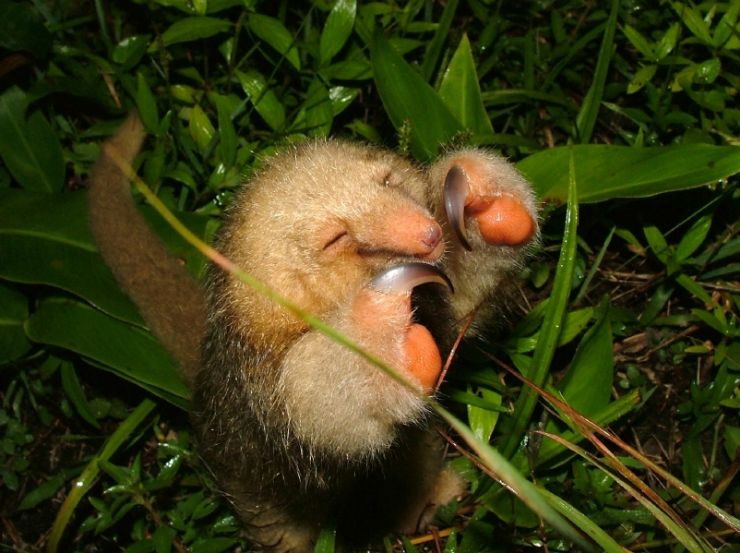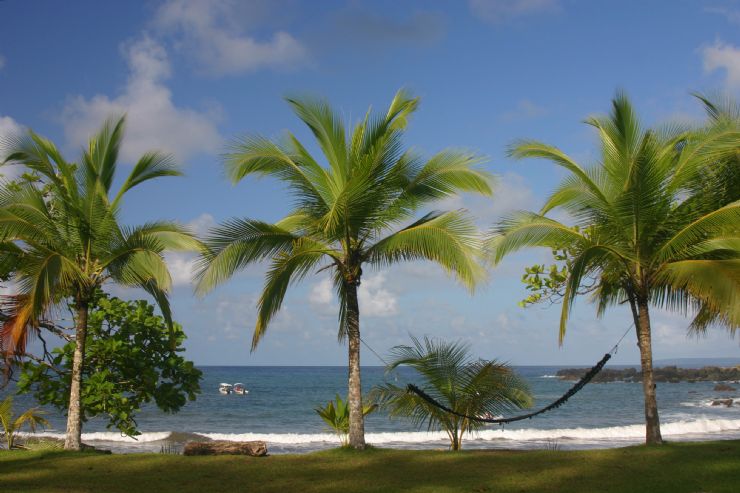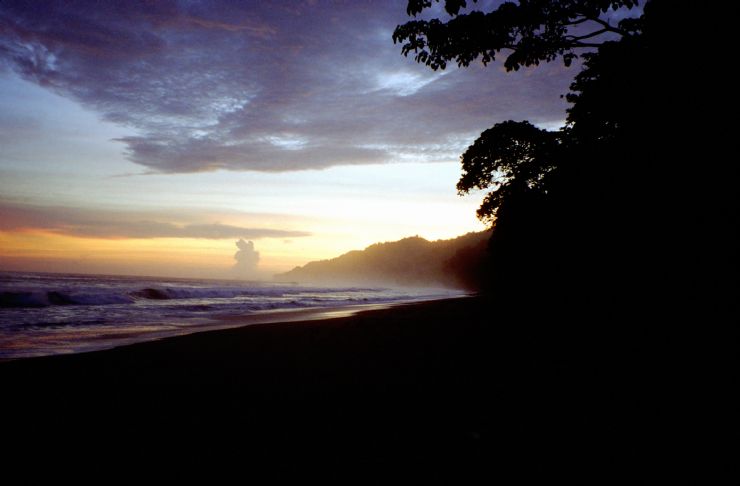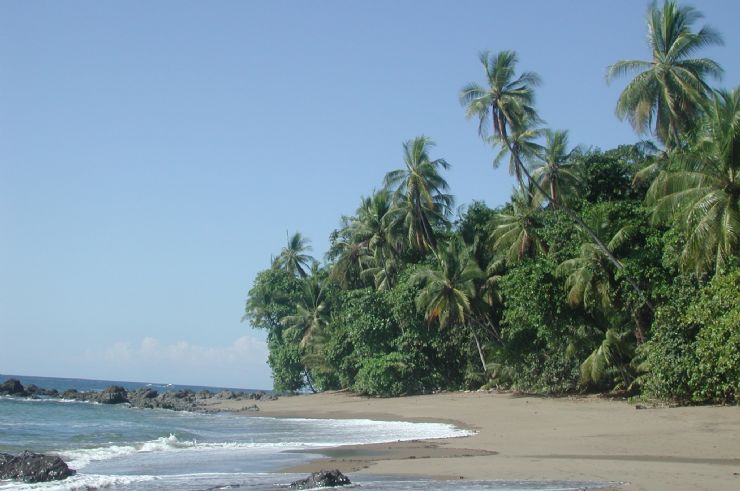
Pygmy Anteater in Corcovado National Park, Costa Rica
I've made friends with some anteaters during my travels throughout Costa Rica, and some of the friendliest are the silky or pygmy anteaters. These little guys are fairly common, and they are the smallest anteater species in the entire world! Maybe that's why I like them so much their relatives are much larger and can weigh up to 18 pounds. They are all distant relatives of the sloth, yet they are the only surviving member of the Cyclopes genus. These little guys and gals are usually found trotting around lowlands and middle-elevation habitats throughout the country. Silky anteaters live all along Central and South America, and they tend to live in little clans in the rainforest. But you may just miss these little guys they average less than a pound and grow to be only around four centimeters long!

Palm Trees aligned on beach in Corcovado Nat. Park
7 Days / 6 Nights
Starting at $779 per person
How to Spot it
Silky anteaters have soft, dense fur that is usually a light golden brown hue, so they blend into the trees easily - you have to keep an eye out for them. One of the ways I can always spot a silky anteater is their short snout and two large claws on their front paws. They move pretty slowly through the forest, and it's usually really hard to spot them, but I'll give you a few pointers! First, it's much easier to spot one of these guys at night. During the day, they are usually sleeping in a little ball in tree branches. It's hard to catch a glimpse of them sometimes from the ground floor because they try not to descend from the canopy if they don't have to. This is why I know silky anteaters so well we both like to be up in the canopies! At night, they meander around looking for food they're nocturnal after all like lianas. The silky eats between 100 and 8,000 ants each day, but is also known to eat other small insects like termites and small beetles.
Silky anteaters don't live very long, and have been negatively affected by destruction of their habitat in some areas. Luckily, many of the anteaters living in Costa Rica stay in conservation areas so their homes aren't harmed.

Corcovado National Park Sunset Silhouette
Although silky anteaters usually stay close to others, they tend to live on their own for the most part. You do want to make sure that you don't get too close to these guys, they're little and cute, but if they feel threatened, they get up on their hind legs and use their claws to defend themselves (maybe that's why they are one of the anteater species that aren't endangered!).
You should make sure that you've planned a visit to Corcovado National Park or stay in Costa Rica hotels near the park if you want to meet a couple pygmy anteaters. The dense forests of this park make it easy for pygmy anteaters to stay safe, high up in the canopy. Since you can camp in this park, it's the perfect opportunity to see these guys in action! Located on the Osa Peninsula, this park is one of the most biologically diverse places in the world, so you'll see plenty of wildlife during your time here.
Now that I've shared with you one of my favorite animals to encounter throughout Costa Rica, why don't you tell me yours? There are so many wonderful creatures that live here, it might be hard to pick just one!

Beach at San Pedrillo Ranger Station Corcovado

